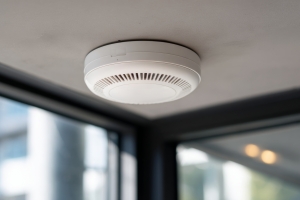
While older homes can offer charm and a distinctive personality, they can also be challenging to protect and maintain. Often, older homes carry more complex risk profiles owing to outdated construction and other risks, which can result in reduced or denied insurance claims. Homeowners in Illinois with properties over 30 years old should note that conventional insurance plans may not provide sufficient coverage for their older homes.
The amount of extra insurance protection a home needs depends on its individual risk profile and the homeowner’s risk tolerance. However, homeowners should still be informed about the benefits of extra insurance protection for older homes and the types of plans they should consider. This article goes into detail about the risks of owning an older home and the insurance protections that can mitigate the homeowner’s liability.
Why are Older Homes at Risk?
Older homes come with many age-related risks that insurance companies may use to reduce or deny claims, including:
- Outdated Wiring: Older homes may have outdated circuit panels or wiring that fails to meet modern compliance standards. When worn, these wiring systems can fail or short-circuit, increasing the risk of house fires.
- Outdated Plumbing: Older galvanized plumbing systems can corrode over decades, eventually leading to leaks. This not only increases the risk of structural damage but can also destroy belongings, leading to water damage claims.
- Damaged Roofing: Roofs should be replaced every 1-2 decades. Many older homes have worn roofs and siding that are more susceptible to storm damage, which can lead to leaks and property loss.
- Foundation Problems: Over time, home foundations settle, potentially leading to materials shifting and cracking, which can cause water intrusion and floor damage.
- Hazardous Materials: Many older homes are built with outdated, potentially hazardous materials, especially those built before 1970. These can include lead paint and asbestos insulation.
- Health Hazards: Additionally, older buildings can contain other hazards such as mold from water damage, radon from uranium-rich soil, or carbon monoxide from old gas lines.
- Pests: Older homes in Illinois can be breeding grounds for common wood-destroying pests, including termites, powder post beetles, and carpenter ants.
For insurance providers, these risks increase the potential payouts to older homes. Many conventional policies omit damage specific to older homes unless the owner buys additional riders and endorsements. This means that the owners of older homes should think more carefully about the protection they need, depending on their home’s age and risk factors.
Considerations for the Owners of Older Homes
When insuring an older home, owners should consider these factors to choose a policy that matches their needs:
Available Coverage Types

While conventional insurance policies include many of these insurance types, the owners of old homes may need to increase their coverage to account for their specific risk profile. Significant insurance coverage types include:
- Dwelling Coverage: Protection for the building itself from covered events, including fire, vandalism, and weather
- Property Coverage: High-value property, such as antique furniture, clothing, jewelry, or art, may warrant extra protection
- Liability Coverage: Guests, family members, or clients injured on the property can file a lawsuit, in which case this coverage can help pay for medical and legal expenses
- Other Structures Coverage: Unattached structures such as garages, gates, sheds, and fences usually require extra protection
- Additional Living Expenses Coverage: This coverage protects homeowners from the extra expenses of temporarily relocating when their home becomes uninhabitable due to a covered event
In each coverage example, older homes encounter a greater risk of high-cost repairs and other hazards due to outdated and fragile building materials, compliance challenges, pest risks, hazardous materials, and more.
Regional Weather
Homeowners in Illinois should consider the weather-related risks in their area to determine the extra protection they need. Many areas in Illinois are prone to flooding; for homeowners in high-risk areas, including low-lying regions near rivers, this coverage is necessary. Yet, many standard policies do not cover flood-related damage. Additionally, cold Illinois winters can cause roof damage, burst pipes, and more, especially in older homes.
Mortgage Requirements
Illinois state laws do not require specific types of coverage, but many mortgage lenders do. Conditions set by lenders may determine the additional protection homeowners need.
Home and Property Value
Homes and personal property of greater value may need extra protection. Some policies fail to provide sufficient coverage for high-value antiques or architectural features, leading to reduced claims without individual value assessments.
Safety Features

Homeowners should consider the safety features of their home when assessing their insurance needs, especially since the insurance company will factor them in. Relevant safety features include storm shutters, burglar alarms, gas detection systems, fire extinguishers, and even deadbolts.
Regularly Review Home Insurance to Make Sure Your Older Home is Protected
Whether an older home warrants extra protection depends on the homeowner’s financial situation, the condition and age of their home, and the condition of its fixtures. Homeowners whose homes have aging plumbing and electrical systems, old roofs, gas lines, a history of infestations, and more should consider additional insurance to help cover the costs of unexpected events.
At Pro Insurance Group, our team of advisors assesses the risk factors of old homes to help owners choose the extra protections they need. Contact our experienced team to learn more about the type and amount of coverage your home should have, depending on its age, condition, and location in Illinois.
